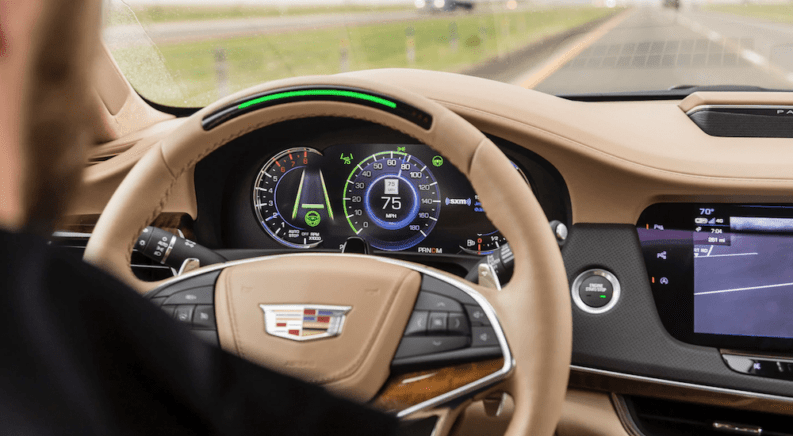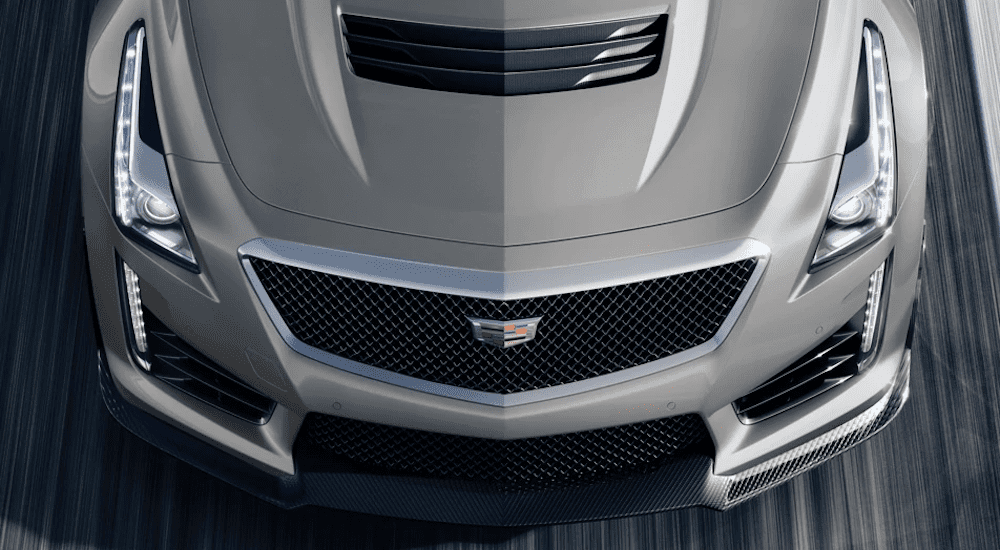Whether you’re at your local Cadillac Dealership in person or surfing the web to find out more about futuristic vehicles, you’ve probably heard all about self-driving cars. The concept of a self-driving car has been around for decades, becoming popular in the post-WWII era when science fiction was beginning to emerge. 1950’s era cartoons and stories depicted autonomous vehicles as spacecraft-like pods with funky wings and spoilers where family groups could play board games or drink coffee together. The reality is slightly different from that, but in reality, not that far off.
New advances in technology are being spurred on by changing consumer tastes. Modern day buyers are focused on convenience, green energy, and safety. They’ve become accustomed to their problems being solvable by technology, and they’re willing to buy products at the cutting edge of tech over more traditional products. Think about the lines outside of Apple stores whenever a new iPhone is released. Now imagine a dealership being able to market a self-driving car to the public. Consumers want technology to improve their daily lives, and this is no different in their cars.
GM is Throwing Its Hat in the Self-Driving Car Ring
General Motors announced in late 2018 that they will be putting a renewed focus on advanced technology in their vehicles. The company is completely re-inventing itself, moving away from manufacturing traditional sedans in favor of investing in green and autonomous technology. Their new slogan, “Zero Crashes, Zero Emissions, Zero Congestion,” is definitely a sign of the times. According to Mary Barra, CEO of GM, General Motors “recognizes the need to stay in front of changing market conditions and customer preferences to position our company for long-term success.” The popularity of sedans is sinking with consumers, though anticipation for highly advanced vehicles with driver assist and autonomous functionality is rising.
With this switch in strategy came a promised investment of $1 billion in Cruise Automation, a driverless car company headquartered in San Francisco which GM acquired in March 2016. GM will be competing with Silicon Valley companies such as Google, Apple, and Tesla to perfect the optimal self-driving car for the American public. The focus will be redirected to technology and cars such as the Buick LaCrosse, Chevy Volt, Cruze, and Impala will be discontinued in production by the end of 2019.
Cadillac’s Super Cruise
Cadillac dealerships are already offering a precursor to completely autonomous vehicles in the form of the Cadillac CT6, which made its debut in 2017. The Cadillac CT6 can come equipped with a feature called Super Cruise, which lets drivers actually take their hands off the wheel and sit back and relax while on major highways. The Cadillac CT6 itself is being discontinued in 2019 for American markets, but the technology that GM is developing is just getting started. Check out this video to see Super Cruise in action!
How Does Super Cruise Work?
Cadillac’s new driver assist Super Cruise feature uses LIDAR, several cameras and sensors, and mapping data to provide a safe setting for drivers to go hands-free on the road. This feature is one of the closest the industry has reached to an auto-pilot function. There have been other features which have led to this driver’s assist Super Cruise option such as cruise control, lane departure warning, and park assist, but this is the first that truly lets the driver take their hands off of the steering wheel.
An infrared camera located in the steering wheel makes sure that the driver continues to monitor the road even while Super Cruise is enabled. This means that a driver can’t check Facebook or take a nap while in their new Cadillac, but it does mean that they can sit back with a coffee and enjoy the ride to a certain degree. When the Cadillac senses that it’s time for the driver to take over control of the vehicle, a light on the steering wheel will turn from green to red and a tone will alert the driver that they need to take back control.
Super Cruise relies on 3D maps stored in the car’s memory and its use is currently restricted to major highways. Cadillacs with Cruise control can sense the cars around them through radars, cameras, and sensors. Cameras and sensors are located in the windshield, in the nose of the car, in the rear, and even in each of the side-view mirrors which look down to watch the lane lines. Since Super Cruise is still considered a driver assistance feature, it’s important the driver remain alert while the car is in motion.
As of right now, Super Cruise is still being considered a luxury feature with a hefty price tag. CT6 buyers can expect to pay $2,500 MSPR for the standalone option on luxury (sticker price: $66,290) and platinum models ($85,290). Driver’s assist packages are also required to enable Super Cruise on luxury vehicles. As the technology continues to be spread across other Cadillac models at dealerships, the eventual price tag is expected to lower.
What about V2V technology?
Vehicle-to-vehicle technology (V2V) is another focal point for General Motors. The concept is one derived from the Internet of Things (IoT), the idea that all mundane objects should be able to digitally contact and interact with other traditionally mundane objects via the cloud. Think a coffee pot that can sense when you’ve arrived home from your morning run because of your smartwatch and starts brewing you a pot of coffee. The concept for vehicles is that one car should be able to sense another car’s distance and speed and calculate the steps it needs to take to avoid a collision.
Right now, Cadillac’s Super Cruise is only one half of this equation. A car with Super Cruise enabled will be able to sense another car and the lane lines on the road, but those other cars can’t sense back. In a perfect world, each car on the road will be able to sense the others and course correct to improve traffic conditions, eliminate collisions, and make driving smoother overall.
Vehicle-to-everything (V2X) is another path GM is exploring. Eventually, a Cadillac will be able to sense other things on the road besides other cars. These could include construction zones, street signs, and even pedestrians. With this technology, cars can talk to each other by exchanging data wirelessly over a band called Dedicated Short-Range Communications (DSRC). This is something similar to wi-fi but will be exclusively reserved for V2X applications. Cadillac is planning to offer a yet unnamed vehicle-to-everything feature with communication capabilities in a high-volume crossover by 2023. Eventually, this and other technologies will be standard at Cadillac dealerships from Dallas to Hong Kong.
What’s in store?
The future looks bright for General Motors as they make the switch from traditional sedans to sci-fi worthy technology. In the not so distant future, you’ll be able to walk into your Cadillac Dealership and purchase a car that can digitally communicate with other vehicles and obstacles on the road. Completely autonomous vehicles with 1950’s style “auto-pilot” settings may even be in store for the American market soon. Cadillac’s Super Cruise is raising the bar already, outstripping even Tesla for advanced driver assist functionality already on the market. From self-driving cars, zero-emissions vehicles, and sedans that can literally see their drivers, Cadillac will certainly be one of the first on the scene with futuristic tech.





